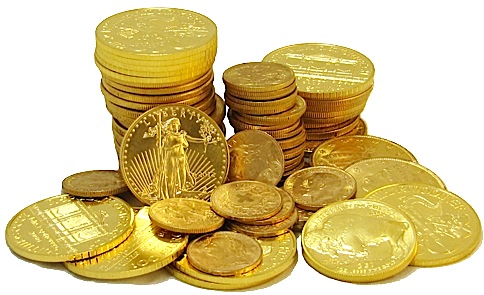
Nearly everybody measures the value of gold, silver, and other precious metals in terms of currency. Spot prices of gold, for instance, are calculated in dollars. As a result, many investors frequently tend to ask questions like, “How much are precious metals worth?”, meaning, of course, “How many dollars is a troy ounce of gold worth?”. This underscores a huge failure of understanding about how owning physical precious metals really works, because precious metals have intrinsic value, whereas government-issued currencies only have fiat value.
Government-issued currencies around the world have been fiat currencies for over 40 years. This means they only have value because the issuing government or agency claims that they have value — they have value by government fiat. Formerly, currencies were backed by some physical representation of money, be it gold, silver, or something else entirely. In those days, anybody could take paper bank notes and exchange them for physical gold or physical silver, as required by law. Currencies tended to remain stable as long as the overall supply of gold and silver remained stable.
The world abandonment of currencies backed by anything was not without purpose. The total supply of gold and silver on the planet was not large enough to continue to back all the currencies in the expanding world economy. The de-coupling of currencies to something of value has led, however, to a dangerous situation. All currencies today have value only because they are declared to have value. If confidence in a currency were to be undermined, that currency could rapidly collapse. Holders of that currency would quickly find their holdings nearly worthless. With the modern fragile economy, dependent on long supply chains and, therefore, extremely vulnerable to easy disruption, the potential for inflation and currency collapse looms large.
As outlined in the previous chapter, gold, silver, and the platinum group metals all have important uses in industry, due to their special chemical and elemental properties. For many of these metals, this industrial demand accounts for most of the annual production of these metals. In fact, as countries like India and China continue to develop their industries and economies, the industrial demand for precious metals will only grow.
The consumer and bullion investment markets make up most of the remaining demand for precious metals. Jewelry and art still account for large amounts of precious metals consumption, but a much larger share of demand is coming from people and entities investing in precious metals, in the form of physical bullion. Individual investors buying gold, silver, and platinum certainly account for some of this demand, but even that is dwarfed by the large investments that private banks, central banks, corporations and governments make in physical precious metals.
The future demand for precious metals will only grow. As developed nations grow their economies, industrial demand for gold, silver, and platinum group metals will also grow. As larger numbers of people in these nations gain more purchasing power, demand for jewelry and physical precious metals bullion will also grow. With First World economies becoming stagnant, investors are increasingly looking to buy bullion as a way to protect their investments, thus also increasing demand.
Annual production of precious metals comes from two main sources – mine output and recycled sources. Mine output has been steadily dwindling — mankind has simply extracted most of the easily-available precious metals. Some precious metals, like rhodium and palladium, are so rare that there are only a few spots on Earth where they are produced in any quantity.
Recycled sources have, recently, allowed the supply of various precious metals to keep up with demand. Of course, recycling precious metals does not increase the total available supply — it merely converts precious metals from a manufactured form back to precious metals bullion. The “Cash For Gold” craze that was witnessed during the last six years is an example of precious metals, gold, in this case, entering the recycling stream to be re-used as gold bullion.
Expect current trends to continue into the future. Mine output will continue to shrink, eventually stagnating and then declining. Recycling of precious metals does not increase the overall supply, it just converts it from one form to another. In short, expect the supply of precious metals to continue to decrease.
The conclusions to draw about the future of precious metals investing are rather clear. Any commodity that faces increased demand and shrinking supply will become scarce, and, therefore, more expensive. Being a rather unique commodity, having intrinsic value as well as commodity value, price increases in precious metals often spur demand instead of thwarting it, as investors scramble to buy physical bullion, lest they be shut out of the market completely.
Over time, expect to see consistent gains in the price of gold, the price of silver, and the prices of platinum group metals, as demand continues to grow and available supply continues to diminish.